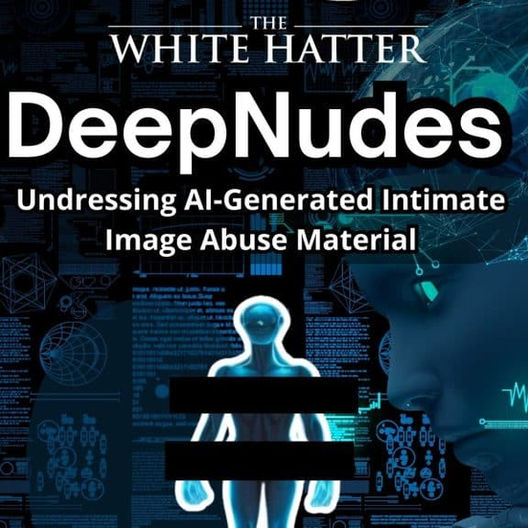How Misused Statistics Are Warping the Debate Over Technology in Schools
- The White Hatter

- Aug 10
- 5 min read

“There are three kinds of lies: lies, damned lies, and statistics.”
Prime Minister Benjamin Disraeli
One in ten students say they’ve seen pornography on a school computer. That’s a concern. But it’s a very different reality from the widely repeated claim that “44% of teens have viewed pornography during the school day”, a common statistic used online as you will read.
When numbers get pulled from research, stripped of context, and repackaged to spark outrage, school boards, parents, and policymakers risk making decisions on emotion rather than evidence. In the current debate over cellphones and laptops in classrooms, that’s exactly what’s happening.
This is not about denying that misuse of technology can cause real harm for some youth and teens. It’s about making sure we set policy based on accurate information, not distorted statistics. Let’s take a closer look at two statistics that have recently been used to publicly support calls for banning cellphone and laptops in schools.
Claim #1: “44% of teens have viewed pornography during the school day.”
On the surface, that number is alarming. It comes from a 2022 study by Common Sense Media in the United States (1). However, while the figure is technically correct, the way it’s being presented is misleading.
Here’s what the study actually found:
Researchers interviewed 1,358 youth and teens.
23% (312 students) said they had seen pornography during the school day.
Of those 312, 44% (137 students) said they viewed it on a school owned device.
That means roughly 11% (we rounded up from 10.9%) of all students surveyed viewed pornography on a school device.
The “44%” figure comes from presenting those 137 students as a percentage of the 312 who reported seeing porn, without mentioning that it’s not 44% of the entire sample. This is a textbook example of a statistic being reframed to spark a stronger emotional reaction.
The more accurate breakdown is:
23% saw pornography during the school day.
11% viewed it on a school-owned device.

A note on definitions: The study didn’t define “pornography” in its questionnaire, nor could we find it online. A 13-year-old and a 17-year-old may not classify the same content the same way. That gap in clarity makes interpretation of the statistics provided even trickier. We have raised similar concerns in earlier discussions about how research uses the term “nudes” and how its meaning can vary depending on age. (2)
Is 11% still a concern? Absolutely! However, it paints a different picture than “44% of teens.” Parents and caregivers deserve the full story so they can make informed decisions, not just the part designed to shock. We also want to acknowledge that online pornography and hypersexualization when it comes to youth and teens is a real concern and something that we speak in depth to in a whole chapter in our free web book for parents, “Parenting In An Online World” (3)
Some see the 11% figure as reason enough to remove classroom technology entirely, if a tool can be misused, even by a minority, remove the tool. But, taken to its extreme, that reasoning can lead to impractical, and harmful, conclusions.
Consider another set of statistics from the Canadian Centre for Child Protection (4):
Between 2017 and 2022, 252 school personnel in Canada were confirmed or accused of sexual offences against students.
Another 38 were criminally charged with offences related to child sexual abuse material.
That’s 290 staff members implicated in just five years.
The closest research we could find in the United States was a 2004 report that found 1 in 10 students report some form of educator sexual misconduct over their K–12 experience (5).
We are not suggesting that teacher misconduct and student tech misuse are morally equivalent. They are not. However, both are examples of risks that exist within an educational system. If we applied the “ban it if misused” principle consistently, the conclusion would be to abolish in person schooling to eliminate all possibility of sexual misconduct, a solution most would rightly call unreasonable and more harmful than the problem it’s trying to solve.
In both scenarios, the overwhelming majority, students using tech and teachers in classrooms, are acting appropriately. Eliminating an entire system because of the actions of a small minority punishes everyone and removes the benefits that system provides.
A safer school is not one that eliminates every tool or environment where harm might happen. It’s one that uses safeguards, oversight, and education to reduce the likelihood and impact of harm.
We do not end in person schooling because misconduct exists. We improve hiring practices, strengthen codes of conduct, and enforce consequences. The same principle should apply to technology.
Pulling technology from classrooms can have significant downsides:
Students lose opportunities to develop digital literacy, a skill set essential for future academic, professional, and personal life.
The gap between students who have access to technology at home and those who don’t widens, increasing inequality.
Teachers lose valuable tools for interactive and differentiated learning.
In the same way, removing in person schooling to prevent misconduct would damage education and social development far more than it would prevent harm. Something we saw during COVID for many students, but not all.
Tech misuse can be better addressed through:
Filtered networks
Teacher supervision
Digital citizenship education
Clear consequences for violations
Teacher misconduct can be addressed through:
Screening and background checks
Mandatory training
Clear policies and codes of conduct
Swift reporting and enforcement
Neither problem requires “burning down the house to fix a broken beam.”
Claim #2: “It takes over 23 minutes to refocus after checking a smartphone.”
This figure is often attributed to a University of California study and used to argue for removing smartphones from classrooms (6). But, the original research looked very different from the way it’s often presented:
It didn’t involve smartphones, only desktop computers and instant messaging.
Participants were adults, not students.
The setting was a workplace, not a classroom.
Productivity was measured on job tasks, not school assignments.
The “23 minutes” was an average, influenced by task type and complexity.
There is credible research showing that digital devices can be distracting (7)(8)(9)(10)(11), but it’s important to base classroom policy on studies that actually reflect classroom realities (12)(13), not extrapolated data from adult office workers. Otherwise, we risk creating policies that don’t match the environment they’re supposed to improve.
No one denies that inappropriate device use in schools is a real issue. But when statistics are misrepresented to push an agenda, whether that agenda is “ban all tech” or “allow unfettered use”, the result is often reactionary policy instead of thoughtful, balanced solutions.
When we set policy based on the most extreme incidents or selectively presented numbers, we create “do something now” rules that may fail to solve the problem and can make cooperation between parents, schools, and students harder.
Safety and opportunity are not opposing goals. The aim should be to manage risks responsibly while preparing students for a world where technology is not optional. That means:
Honest statistics
Full context for data
Solutions that protect students without handicapping their future skills
Misuse of technology by a small percentage of students is a concern. Misconduct by a small percentage of teachers is a concern. In both cases, the answer is not to remove the system entirely, but to strengthen safeguards around it.
At The White Hatter, our focus is on digital literacy, not digital fear. We address challenges honestly, understand research as it was intended, and use that knowledge to help create safer, more effective learning environments both inside and outside of the home.
If we want meaningful change, we have to start with the “whole” contextual truth.
Digital Food for Thought
The White Hatter
Facts Not Fear, Facts Not Emotions, Enlighten Not Frighten, Know Tech Not No Tech
Sources:
https://www.thewhitehatter.ca/post/why-researchers-can-not-just-ask-youth-about-only-nudes
https://www.thewhitehatter.ca/post/online-pornography-and-hypersexualization
https://protectchildren.ca/en/resources-research/school-report/
https://www.ed.gov/sites/ed/files/rschstat/research/pubs/misconductreview/report.pdf
https://www.sciencedirect.com/science/article/abs/pii/S0747563215300595
https://casa.colorado.edu/~dduncan/wp/wp-content/uploads/AER010108.pdf
https://journals.sagepub.com/doi/full/10.1177/2158244015573169
https://www.sciencedirect.com/science/article/abs/pii/S0927537116300136
https://www.sciencedirect.com/science/article/abs/pii/S0360131515000883?via%3Dihub
https://www.sciencedirect.com/science/article/abs/pii/S0272775719303966?via%3Dihub
https://www.sciencedirect.com/science/article/abs/pii/S0747563215300595














